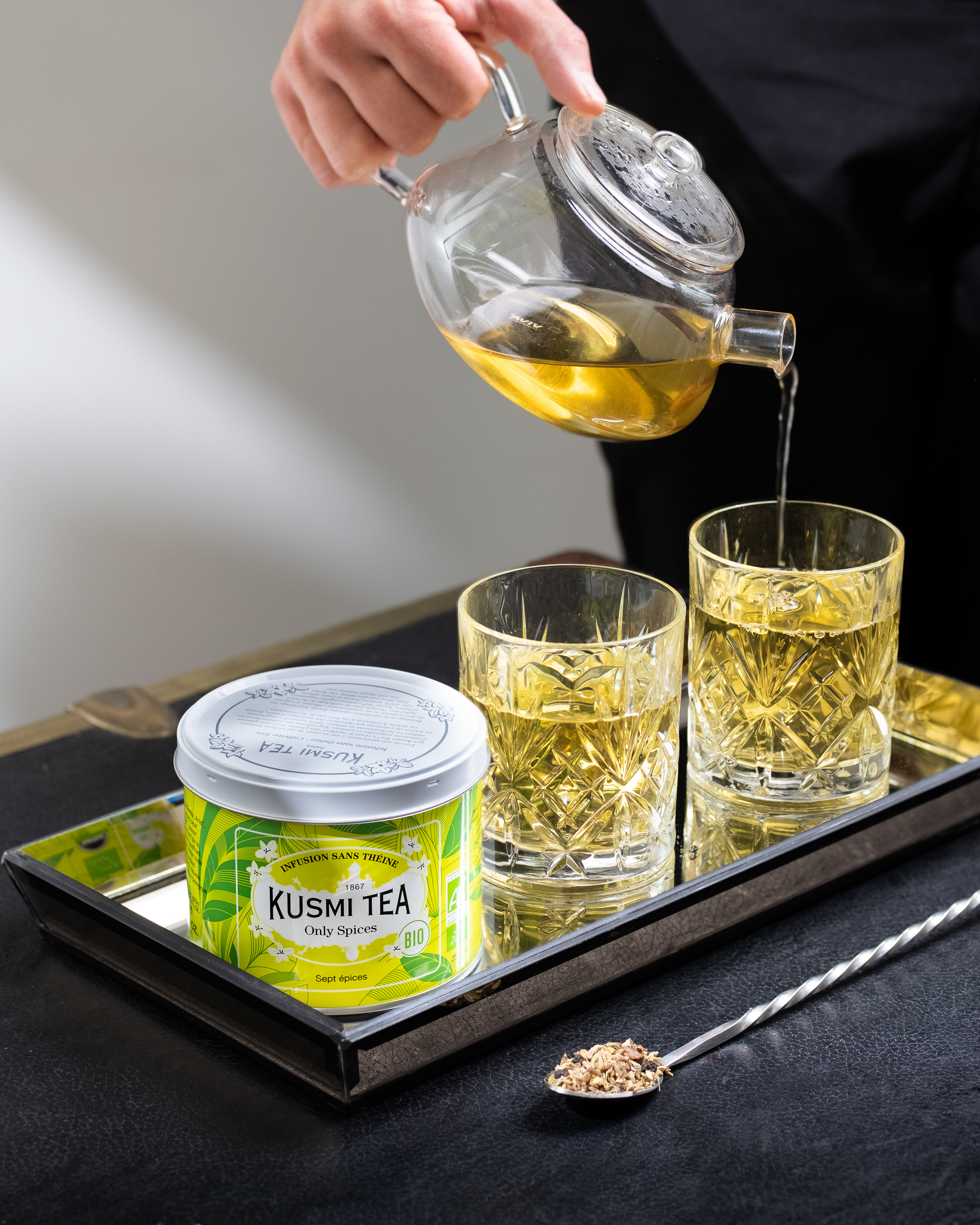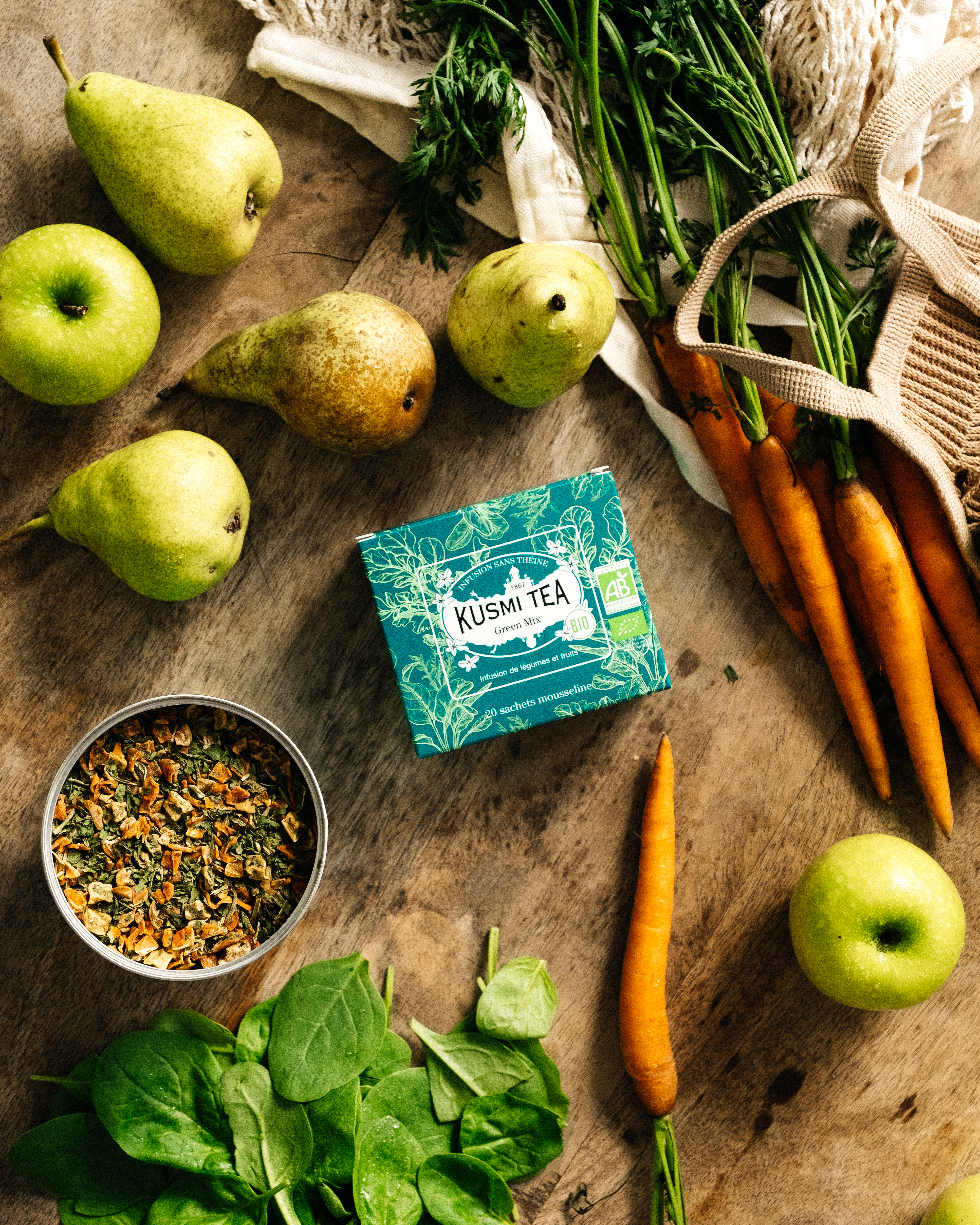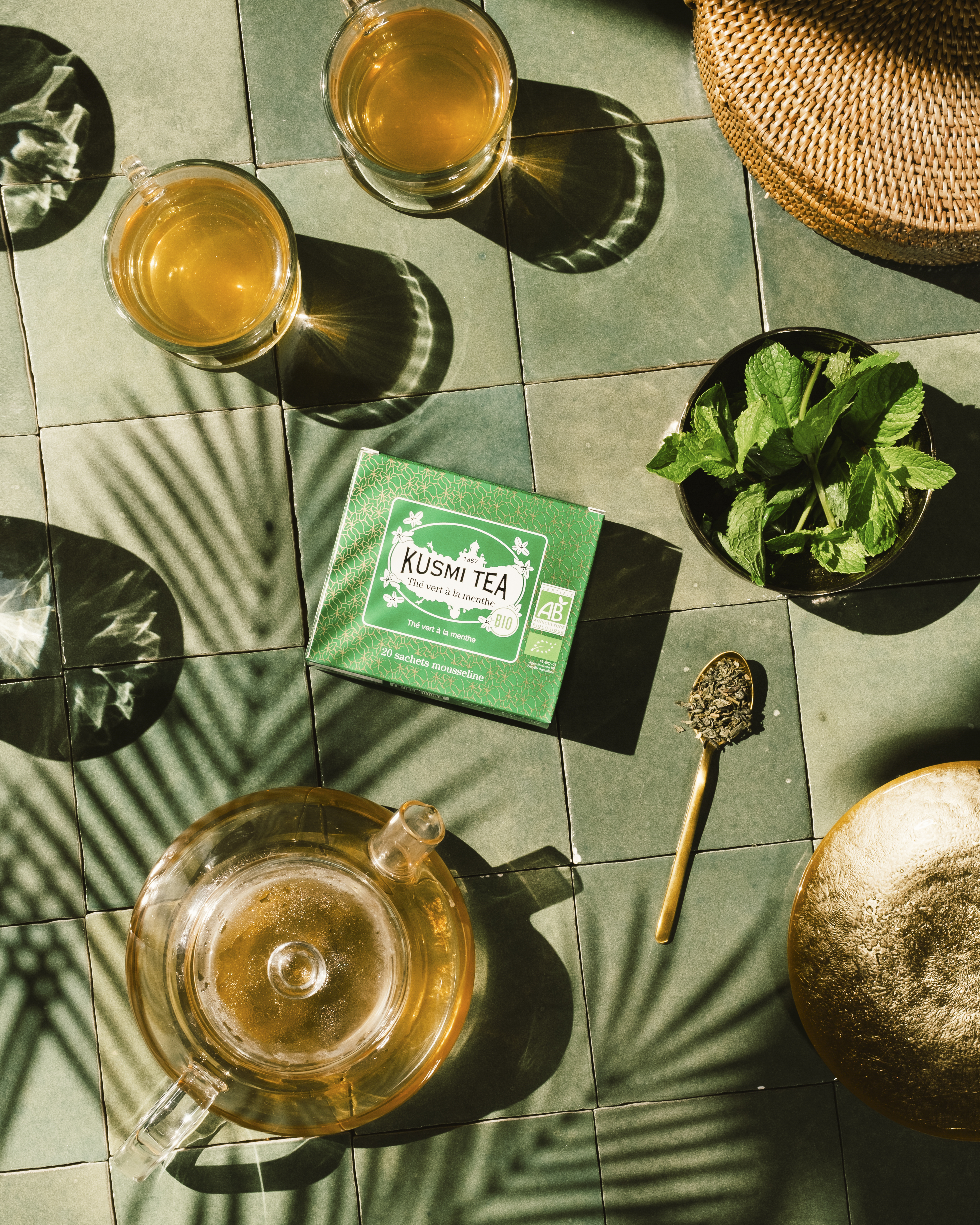While kettles and teabags are perfect for those in a hurry, lovers of tea (and its ancient ceremonial side!) know that a teapot is a must-have for any teatime worth its salt. Whether as a gift, a birthday wish-list idea, or a personal indulgence (we are totally on-board with well-deserved gifts from you to you!), the quest for the perfect teapot has begun!
Choosing the right teapot: which material is best?
How can you choose from the multitude of teapot models on the market, from the simplest to the most aesthetic? Each material has its own advantages and influences the infusion, but should you pick a teapot made with cast iron, ceramic, or glass? Follow the Kusmi guide to decide!
Cast iron teapots.
These are traditional Japanese teapots also known as Tetsubin Kyusu. Its strengths include the thermal advantage of the cast iron which is ideal for conserving heat. A cast iron teapot can be placed directly over a heat source to boil water and brew all sorts of tea. Choose a model with an enamel coating to make it easy to clean while protecting the cast iron from rust.
Ceramic and porcelain teapots.
It can be hard to tell these two apart! Porcelain is a type of ceramic, but ceramic is not always porcelain. Let us explain: Ceramic refers to the production of objects in terra cotta. However, there are several different cooking temperatures used to create different materials, including earthenware, porcelain, and stoneware. While they remain porous after the first fire (which isn’t ideal for a receptacle containing water!), they are often enameled to increase their resilience. Enameling consists of applying a fine layer of powder that then becomes melted glass. After being enameled, ceramic and porcelain teapots are “neutral” with no “memory,” which means you can infuse different types of tea one after another without mixing up the flavors.
Clay teapots.
Also made with terra cotta, porous clay teapots are special in that they are teapots with “memory.” This means they “remember” the teas that have been brewed in them. As they are not enameled, the tannin from the tea leaves a light residue on the inside, adding to the flavor of the next infusion. You should therefore use these models to brew the same tea variety (green tea, white tea, black tea, flavored teas, smoked teas, etc.) to avoid strange mixtures. In contrast, teapots with a “patina” developed over many years by tea masters are sold for astronomical prices!
Glass teapots.
We love the elegant, contemporary design of this Scandinavian-inspired teapot. Its transparent body gradually reveals the color of the tea, making it perfect for keeping an eye on the brew. Glass teapots are easy to clean and don’t keep a memory of past flavors. However, they are more fragile (especially compared to cast iron models!), and not as effective at retaining heat.

Automatic teapot.
While tradition is great, innovation can also win over tea lovers. With these models, you simply pour in the water and the automatic teapot takes care of the rest! Equipped with different programs which can sometimes be customized, it heats and infuses all tea varieties, tells you when the tea is ready, and keeps it warm. Some models can even be programmed to ensure your tea is ready when you get up in the morning. However, these cutting-edge models are naturally more expensive than traditional teapots.
Looking for the perfect teapot? Choose one to suit you!
To find the teapot most adapted to you, we recommend analyzing your habits before buying. What type of tea do you drink? Loose tea or teabags? How many mugs do you need to fill? And for how many people? To help you, below we talk about the perfect teapot for your tastes and preferences.
The best teapot for loose tea?
To make life easier, loose-leaf lovers can opt for a teapot with an integrated filter. Often made with metal, the filter is located either under the lid or directly inside the spout. The second option enables a more intense infusion as the leaves bathe freely in the hot water. The liquor is only filtered at the very end, just before you drink it. Tea infusers and tea balls can also be added into teapots that don’t have a filter.
The best teapot for teabags.
If you only have teabags to hand, then a teapot is useful for heating water and infusing your tea. You may have to use a second teabag depending on the size of your teapot. All teapots are suitable for this method. If yours has a filter, remember to remove it, if you can, to allow more space for the tea!

The best teapot for a tea ceremony.
This will depend on the country and the ritual you have in mind. In China, the tea ceremony (Gong Fu Cha) uses a terra cotta teapot (with memory). However, the Cha No Yu tea ceremony in Japan is focused on drinking matcha tea. While the water is heated in a traditional cast iron teapot, the matcha is then frothed up in a bowl using a bamboo whisk. Meanwhile, in Russia (the birthplace of Kusmi), the samovar ritual requires always having hot water to make tea at any time of day. A samovar is a metal container that keeps water hot, with a metal or porcelain teapot placed on top. This holds highly concentrated black tea that guests can dilute using hot water from the samovar.
The best teapot for mint tea.
Moroccan teapots are traditionally made with stainless steel or silver. They have a long spout, a large handle, and are paired with a matching tray. They are used to brew plain green tea along with a bunch of fresh mint, which is then sweetened before serving. If you don’t have fresh mint, Kusmi offers an organic mint green tea made with dried leaves, which is just as delicious!

Looking after your teapot
Whatever material you choose, avoid using washing-up liquid, scourers, and washing machines, which are overly abrasive. Simply rinse your teapot with boiling water. After drying, leave it with the lid off to allow air in. If you find stains or residue, use natural products (white vinegar, lemon juice, baking soda) to remove the tannin marks and rust from a cast iron teapot.

Discover all our teapots







